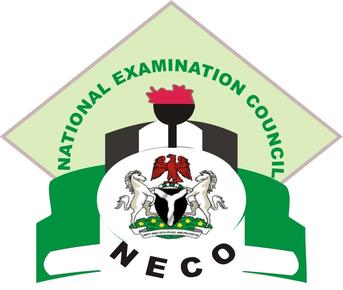NECO 2019/2020 SSCE GEOGRAPHY SYLLABUS/BROCHURE QUESTIONS & ANSWERS
NECO 2019 GEOGRAPHY ANSWERS GEOGRAPHY OBJ: 1-10: BBDEADACAA 11-20: DCDDCEBCAC 21-30: AEECADBBAD 31-40: BADDDCEECE 41-50: DBACACACCB 51-60: EDADACACCC (1a) DRAW THE DIAGRAM (1b) Length of the main road =22/1*50,000/100,000 =22/1 * 5/10 =2 =22*1/2 =11km (1b) the drainage pattern of the mapped area is the south east direction of the rivers (1c) (i)lumbering- because of high trees (ii) fishing- because of rivers (2a) An equinox is a day when the sun is in its zenith over the Equator, and the Earth experiences days and nights of generally equal length. (2b) (i) An equinox is the time when the sun is nearest or spends the same amount of time at the horizon or the equatorial plane giving equal lengths to day and night while a solstice is the time when the sun is farthest from the equatorial plane causing longer nights and days. (ii) An equinox happens at the start of spring and fall while a solstice happens during summer and winter. (iii) Both happen twice every year; an equinox occurs at specific periods of time rather than days while a solstice occurs for several days. (iv) They are both connected with the seasons oftentimes marking the separation between them. “Equinox” comes from the Latin words that mean “equal” and “night” while “solstice” means “sun” and “to stand still.” (3a) (1)The Intermontane plateau: is when a plateau is surrounded by mountains on all sides, it is refers to an Intermontane plateau. Some examples of the Intermontane plateau include the Tibetan plateau and the Bolivian plateaus. (2)The Piedmont plateau: a Piedmont plateau is located close to a mountain on one side. Some good examples of Piedmont plateaus are the Malwa plateau in India, the Patagonian plateau in Argentina and the Piedmont plateau in America. (3)The Continental plateaus- when a plateau is surrounded by oceans or plains, it is refers to as continental plateau. Examples of continental plateaus include the plateaus of Western Australia and Africa. (4)Dissected plateaus : These plateau are highly eroded plateaus cut by rivers and broken by deep narrow valleys. (3b) (1)Plateaus are very good sources of minerals such as Iron, copper, gold, diamonds, Manganese, coal, etc. (2)Areas that have plateau also have waterfalls as river falls from a great height of the plateau (3)Although plateaus are not very good for agricultural activities due to hard rock formation, hence, agricultural activities can be carried out at the base of the plateau where lava soils have deposited. (4)Plateaus that are formed from the lava of volcanoes have very fertile soil, making them useful for agriculture activities (5)Many plateaus have scenic spots and are of great attraction to tourists. (Good examples are the Grand Canyon and many waterfalls). (6a) (i)Accurate Delta e.g Niger (ii) Bird’s foot delta e.g Mississippi delta (6b) (i) Deposition of materials (ii) Flow of water into the ocean (iii) The river flow through the distributaries into the sea (6c) (i) To Generate H. E. P (ii) Tourist Center (iii) Deposits of natural resources (7a) Environmental problems or hazards are disasters which affects lives and properties as a result of the action of man and other natural phenomenon. (7b) (i)Flooding (ii)Desert Encroachment (iii)Drought (iv)Soil Erosion (v)Deforestation (7c) (1) climatic changes: is a change in the statistical distribution of weather patterns when that change lasts for an extended period of time. (2) overgrazing occurs when plants are exposed to intensive grazing for extended periods of time, or without sufficient recovery periods. (3) bush burning: is the act of setting forests, weeds and grasses on fire. (7d) (1) afforestation (2) irrigation (3) rotational/controlled grazingCategories: NECO SSCE Syllabus Questions
0 Responses




